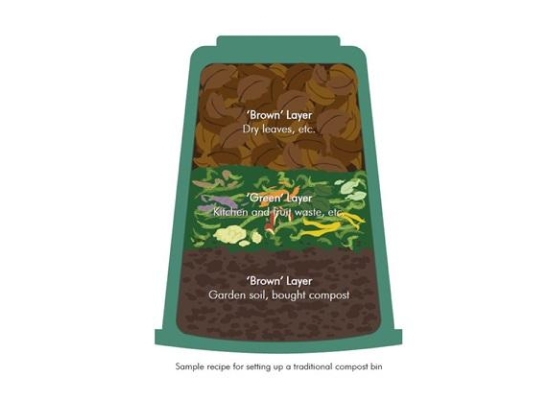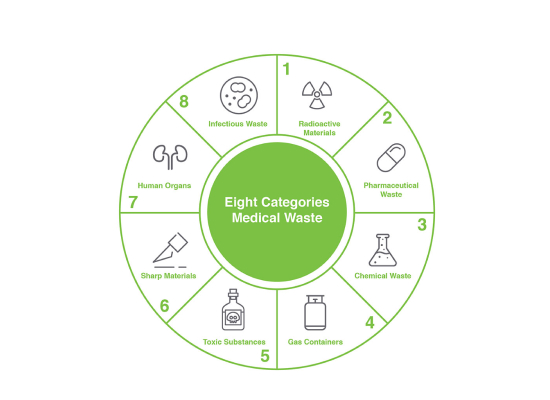As per SWM 2016 rules, How many major colored dustbins have to be maintained for the segregation of waste at households?

Segregated wastes are now dumped in the particular dustbins of Green, Blue, and Black colour.
- The Green-coloured dustbins are meant for wet and biodegradable wastes.
- Blue dustbins are meant for the disposal of plastic wrappers and non-biodegradable wastes.
- Black dustbins are meant for Domestic Hazardous wastes/e-waste.
Which waste is the green dustbin for?

The Green-coloured dustbins are meant for wet and biodegradable wastes. For eg: kitchen wastes including vegetables and fruit skins.
Which of the following can you put in your yard waste/food scrap bin?

Good things to compost include vegetable peelings, fruit waste, teabags, plant prunings, and grass cuttings. These are fast to break down and provide important nitrogen as well as moisture. It's also good to include things such as cardboard egg boxes, scrunched-up paper, and fallen leaves.
Which of the following food-soiled papers should you not put in the food scrap composting or yard waste bin?
Most plastic is manufactured from petroleum, the end product of a few million years of natural decay of once-living organisms.
Composting is the process of

Composting is an aerobic method (meaning it requires air) of decomposing organic solid wastes. It can therefore be used to recycle organic material. The process involves decomposing organic material into a humus-like material, known as compost, which is a good fertilizer for plants.
What are the essential components of composting?

Your compost pile should have an equal amount of browns to greens. You should also alternate layers of organic materials of different-sized particles. The brown materials provide carbon for your compost, the green materials provide nitrogen, and the water provides moisture to help break down the organic matter.
What's the safest and the most eco-friendly way to dispose of waste?
Cheap, easy, and virtually risk-free, composting is a natural process that breaks down organic waste and turns it into rich manure that can be used to improve the quality of the soil.
What type of worms is the best for vermicomposting?
Red wigglers, known as Eisenia Foetida, are the best type of worms for vermicomposting. These worms live well in highly populated conditions and they don't burrow.
How long will it take for the worm population to double?

It takes about 90 days for a healthy worm population to double in number.
What are worms afraid of?

Worms are afraid of the light. You will notice that they will dive below the surface if you open the bin during the daytime.
What are the 3 R's of the environment?

The three Rs are reduce, recycle and reuse.
The term 'reduce' aims at lowering the usage of natural resources to avoid wastage. For example, using less electricity.
The term 'recycle' aims at using the discarded items by recycling them. For example, recycling paper and plastic and sending them to the respective industries for the formation of new paper and plastic.
The term 'reuse' means using the same thing again and again. For example, using a paper bag over and over again.
What of the following is not a microorganism that has a major role in compositing?

Bacteria, fungi, and actinomycetes are the microorganisms that have a major role in compositing as they help to biologically degrade the organic matter present in the wastes, where the plant is not a microorganism.
The solid waste from hospitals is classified as:

Generally, medical waste is healthcare waste that may be contaminated by blood, body fluids, or other potentially infectious materials and is often referred to as hazardous waste.
Which of the following methods leads to an increase in the surface area for microorganisms to act?

Disintegration before composting leads to the removal of bulky wastes thereby, increasing the surface area for microorganisms to act whereas, recycling, vermicomposting, and incineration are methods used to degrade the solid wastes.
Which of the following methods does not enhance the intensity of disintegration?

Velocity of degradation, time of process, and composting process methods enhance the intensity of disintegration thereby producing better compost, whereas, recycling is used to recycle the wastes and not produce compost.



Share your Results:

 Return to Quiz Page
Return to Quiz Page